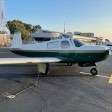Requiem for an Ownership
-
Members Online
- TeshDar
- Pinecone
- Ron McBride
- Ibra
- dzeleski
- crustymuffin
- Zippy_Bird
- ToddCC22
- M20S Driver
- TCC
- Igor_U
- Fix
- Nick81
- McMooney
- kortopates
- WilliamR
- AndreiC
- chrisburdzy98
- eman1200
- Aaviationist
- hammdo
- richardbrochu27
- cbarry
- MoonFlyer68
- IvanP
- Slick Nick
- HERVE
- Supereri73
- T. Peterson
- ElkoRandy20J
- Jim F
- EricJ
- UteM20F
- Tmack201
- N201MKTurbo
- philiplane
- hubcap
- jlunseth
- Guillaume
- Chaseford10
- Adam Belle
- Ragsf15e
- 33UM20C
- Greg Ellis
- Steve Hughes


Recommended Posts
Join the conversation
You can post now and register later. If you have an account, sign in now to post with your account.